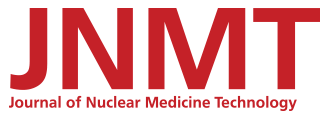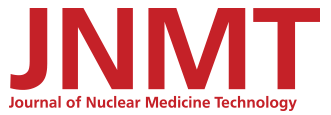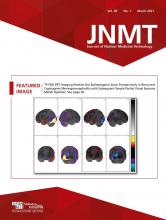Abstract
Prophylactic cranial irradiation (PCI) is used to decrease the probability of developing brain metastases in patients with small cell lung cancer and has been linked to deleterious cognitive effects. Although no well-established imaging markers for these effects exist, previous studies have shown that structural and metabolic changes in the brain can be detected with MRI and PET. This study used an image processing technique called texture analysis to explore whether global changes in brain glucose metabolism could be characterized in PET images. Methods: 18F-FDG PET images of the brain from patients with small cell lung cancer, obtained before and after the administration of PCI, were processed using texture analysis. Texture features were compared between the pre- and post-PCI images. Results: Multiple texture features demonstrated statistically significant differences before and after PCI when texture analysis was applied to the brain parenchyma as a whole. Regional differences were also seen but were not statistically significant. Conclusion: Global changes in brain glucose metabolism occur after PCI and are detectable using advanced image processing techniques. These changes may reflect radiation-induced damage and thus may provide a novel method for studying radiation-induced cognitive impairment.
Prophylactic cranial irradiation (PCI) is used in the treatment of patients with small cell lung carcinoma and has been shown to decrease the incidence of brain metastases and increase overall survival (1,2). However, there has been increasing understanding that PCI contributes to cognitive deficits in these patients, with 50%–90% of adult patients who survive more than 6 mo after whole-brain radiation experiencing deficits (3). These effects have been generally termed radiation-induced cognitive impairment.
Currently, there are no well-established imaging biomarkers for radiation-induced cognitive deficits. Based on posited theories for the etiology of radiation-induced cognitive impairment, it has been predicted that there will be roles for various implementations of MRI and PET (3). A subsequent study has shown that MRI can detect significant changes in gray matter density and white matter microstructure in patients after receiving PCI (4).
PET with 18F-FDG is currently used clinically for the evaluation of various dementias and cognitive impairment (5,6). The technique holds promise for delineating the effects of radiation-induced cognitive impairment based on its ability to demonstrate glucose metabolism in the brain, which is tightly coupled with neurosynaptic activity (7). Changes in 18F-FDG uptake in specific brain regions has been demonstrated in nonhuman primates receiving whole-brain radiation (8), and a recent study showed that regional changes in 18F-FDG uptake could be detected in patients who underwent PCI (9). Since PCI treats the entire brain, the occurrence of more global changes could also be expected. A previous MRI study by Simó et al. (4) demonstrated changes in white matter microstructure in the entire corpus callosum. It has not been previously explored whether advanced image analysis techniques are capable of detecting more global changes in 18F-FDG uptake in PCI patients.
Texture analysis in image processing is generally used to quantify the local variations in image brightness. Tied closely with the concept of tone, which describes the varying levels of image brightness, texture characterizes the spatial distribution of the tones in an image (10). Several techniques have been developed for texture analysis of images. These techniques can be categorized into 3 groups: statistical, spectral, and structural. Statistical methods are based on analyzing the distribution of tones in an image by computing histograms and their properties such as statistical moments (11). These approaches are best suited to characterizing features such as inhomogeneity, irregularity, and contrast. Spectral methods apply autocorrelation and Fourier analysis to evaluate the periodic features of an image. Finally, structural approaches decompose the image into a set of subpatterns, arranged according to certain placement rules. To date, there has been an abundance of work investigating the application of different texture analysis methods to volumetric medical imaging (12).
In recent years, several studies investigating the clinical value of using texture analysis to quantify heterogeneity in PET uptake have been published. Most of this work is applied toward various tumor types (bone, lung, salivary gland, breast, head and neck, and brain cancer, among others) (13–16), as well as more recently toward the assessment of neurodegenerative diseases with PET (17,18). Although these studies have shown much promise for differentiating malignant from healthy tissue, little work has been focused on applying texture analysis to PET imaging within other contexts. We hypothesized that texture analysis could be applied to 18F-FDG PET imaging in order to detect changes in brain glucose metabolism after PCI.
MATERIALS AND METHODS
Patient Selection
This retrospective study was approved by the institutional Human Subjects Protection Program with a waiver of the requirement to obtain informed consent. Patients were selected from a dataset previously generated by Eshghi et al. (9). In brief, those authors searched the institutional electronic medical record for patients with biopsy-proven small cell lung cancer who were treated with PCI between 2013 and 2016. Patients were treated to a total dose of 2,500 cGy in 10 daily fractions of 250 cGy each, typically delivered over 2 wk. The target volume consisted of the entire brain and surrounding meninges within the cranium, with beam flashing beyond the skin and with the bottom of the field either at the foramen magnum or inferior to C1. Standard blocking of organs at risk such as the lenses, pharynx, and oral cavity was achieved with multileaf collimation. All patients had previously been treated with first-line chemotherapy and thoracic radiation per the standard of care. Patients with brain metastases or other intracranial pathology were excluded. These patients received 18F-FDG PET/CT imaging before and after PCI therapy as standard-of-care imaging for postchemoradiation tumor response. In total, 16 patients matched the inclusion criteria for this study. A single patient was excluded from the analysis because of poor image quality.
PET/CT Imaging
18F-FDG PET/CT imaging was performed in accordance with the standard institutional protocol. Patients fasted for a minimum of 4 h, and fingerstick blood glucose levels were measured before administration of 18F-FDG. 18F-FDG was administered intravenously at a weight-based dose of 3.7 MBq (0.1 mCi)/kg, with a range of 185–370 MBq (5–10 mCi), after which the patients sat quietly awake for approximately 60 min. Imaging was then performed from the vertex to the thighs using a GE Healthcare 690 time-of-flight PET/CT scanner. A low-dose CT scan was obtained with oral contrast medium but no intravenous contrast medium before the PET acquisition. PET data were acquired using 7–8 bed positions, with 2.5 min per bed position, and were reconstructed using ordered-subsets expectation maximization (28 subsets, 2 iterations).
Image Analysis
The attenuation-corrected, time-of-flight PET image sequences were selected for use in this study. Slices including the brain from the vertex to the brain stem were manually selected. Each slice was segmented manually using ImageJ software in order to select only the patient’s head and to exclude the background and the patient’s arms. These segmented data were used to perform texture analysis of the entire brain parenchyma. Then, the image sets were segmented manually to isolate the right and left frontal, parietal, and temporal lobes. The occipital lobes were excluded from this analysis. Manual segmentation was performed by a radiology resident with prior image segmentation experience. Texture analysis was performed within each brain region on the right and the left.
Texture Analysis
The texture features were computed by first constructing and analyzing the gray-level cooccurrence matrix (GLCM). The GLCM was chosen over other texture analysis methodologies because of its widespread use and validation in the literature and its ability to quantify pixel-scale variations in image brightness. Additionally, given that a manual segmentation method was used, having a robust feature set that is insensitive to individual pixel values was of interest to reduce the overall effect of any variability that may occur due to the manual segmentation procedure.
The GLCM is a spatial histogram that describes the distribution of gray-level values occurring near one another in an image (10). Each entry in the GLCM, p(i,j | d,θ), corresponds to the probability that a pixel (or voxel) with a gray level of i is a distance d pixels away in the θ direction from a pixel with a gray-level of j. With image data quantized into Ng gray levels, the GLCM is an Ng × Ng matrix. In this case, 4 directions for θ are possible: 0°, 45°, 90°, and 135°; for 3-dimensional data, 13 directions are possible for θ. In this study, d was fixed at 1 pixel, and the GLCM was computed for the 4 possible directions of θ for a single image slice. All images were normalized and quantized to 8-bit (intensity ranging between 0 and 255). From the GLCM, we then computed 13 texture features introduced by Haralick et al. (10), averaged over the 13 directions for θ. Statistical significance for differences in texture features was computed using a 2-way dependent Student t test. The analyses were completed using the Python programming language on a computer with an Intel Core I-4710HQ central processing unit (2.50 GHz) and 16-GB double-data-rate 3L memory.
RESULTS
Global Differences in Texture Features
Texture analysis was first applied to the whole-brain–segmented dataset, with images including the entirety of the brain parenchyma from vertex to brain stem. Texture features were calculated for image sets before and after PCI, and the results were compared.
Statistically significant decreases in 4 texture features were found after PCI: contrast; sum of squares: variance; sum variance; and difference entropy. Contrast decreased from 181.4 to 150.1 (P = 0.043); sum of squares: variance decreased from 0.1385 to 0.1203 (P = 0.035); sum variance decreased from 8.479 to 8.303 (P = 0.042); and difference entropy decreased from −0.563 to −0.595 (P = 0.039).
No statistically significant differences were found for angular second moment, correlation, inverse difference moment, sum average, sum entropy, entropy, difference variance, or information on measurement of correlation 1 or 2.
These results are summarized in Table 1.
Texture Analysis of Whole-Brain–Segmented 18F-FDG PET Datasets
Regional Differences in Texture Features
Next, texture analysis was applied to the regionally segmented dataset. Texture features were calculated for the right and left frontal, parietal, and occipital lobes both before and after PCI. The texture feature results were then compared for each region in the pre- and post-PCI groups. The results of this analysis are detailed in Table 2. Statistically significant differences were found for sum average in the right and left parietal lobes and for information on measurement of correlation 2 in the left parietal lobe.
Texture Analysis of Regionally Segmented Datasets
However, given the performance of numerous (78) statistical tests in this analysis, a correction factor must be applied to the α (significance) level. Using the Bonferroni adjustment, an α-value of P < 0.00064 would be required for definite statistical significance, which renders the regional differences in texture features nonsignificant.
DISCUSSION
This pilot study used texture analysis to explore changes in glucose metabolism in the brain after the administration of PCI. The results demonstrate that statistically significant changes can be detected when image analysis is applied to the brain parenchyma as a whole. However, when the analysis was applied on a lobar regional basis, statistically significant differences were not seen. This finding suggests that texture analysis can characterize diffuse alterations in brain glucose metabolism occurring after PCI, a novel finding given that previous studies using 18F-FDG PET have shown only localized alterations (8,9).
Four texture features demonstrated statistically significant differences before and after PCI. Contrast measures the variations in brightness by providing a higher weight to GLCM entries that are far from the diagonal. A high value for contrast is obtained when adjacent pixels have significantly different gray levels. Sum of squares: variance, or joint variance, is calculated as the standard measure of variance for a distribution. In the context of texture analysis, it refers to the gray-level variability of a pair of adjacent pixels and is a measurement of image inhomogeneity. Unlike contrast, variance has no dependence on spatial frequency. A high variance is suggestive of a high contrast, but the converse does not necessarily hold true. Similarly, sum variance is a measure of variability but measures the dispersion of the gray-level-sum distribution of the image. Difference entropy is a feature that is related to the amount of disorder related to the gray-level distribution in the image. More randomness in the image produces a higher level of entropy. Mathematic expressions for these 4 texture features are presented in Table 3.
Relevant GLCM Texture Features, Originally Described by Haralick et al. (10)
In summary, all 4 of these texture features relate to randomness or variability in the image. All 4 features decreased significantly after PCI, indicating decreased variation in the 18F-FDG uptake. The underlying biochemical substrate for these alterations in glucose metabolism is unknown but could correlate with the widespread changes in gray matter density and white matter microstructure previously demonstrated using MRI (4).
This study was limited by the small sample size, particularly in interpreting the regional analysis. Although there were trends toward differences in texture features in specific brain regions, the number of regions and texture features being tested required a strict high level of statistical significance. It is possible that significant regional differences in texture features could be detected with a larger dataset. Another limitation exists in the use of manual segmentation of the image data, which could potentially introduce variability in the results. Developing an automated segmentation algorithm was outside the scope of this project. However, the texture analysis methodology used has an averaging effect over the pixels within the segmented volume. Therefore, variability in the boundaries of the segmented volumes should have had minimal effect on the ultimate computed feature values.
A potential confounder in these results is that each patient had also received first-line chemotherapy before PCI; however, this is unavoidable since it is the standard of care. Several studies have documented both regional and global differences in 18F-FDG uptake in the brains of patients after receiving chemotherapy (19–22). Although the specific timing of the PET scans used in this study (before and after PCI) increases confidence that the observed changes were due to PCI, it is possible that they may reflect a component of chemotherapy toxicity. It should also be noted that none of the patients in this study received hippocampal-sparing radiotherapy (23), and as such, these results cannot be generalized to that methodology.
Although this study focused on only a single texture analysis methodology in the form of the GLCM, further work could examine the application of other techniques (run length matrix, size zone matrix, and neighborhood gray tone difference matrix) in this context.
Unfortunately, this retrospective study was not able to collect neuropsychologic testing data from the patients in order to quantify any cognitive deficits. Ideally, future work could perform longitudinal neuropsychologic testing in conjunction with imaging to determine whether alterations in glucose metabolism in these patients correspond to clinically significant cognitive impairment.
CONCLUSION
This pilot study suggests that global alterations in glucose metabolism occur after PCI and that these changes can be detected using texture analysis techniques. Further work is needed to synergistically combine the global information from texture analyses with regional analyses of glucose metabolism. This combined imaging biomarker could then be used to augment neuropsychologic testing for the study of radiation-induced cognitive impairment.
DISCLOSURE
Phillip Kuo is a consultant for Novartis, Konica Minolta, and Bayer; a consultant and speaker for Eisai and GE Healthcare; and receives grant funding from Blue Earth Diagnostics. No other potential conflict of interest relevant to this article was reported.
Footnotes
Published online Oct. 5, 2020.
REFERENCES
- Received for publication April 28, 2020.
- Accepted for publication August 7, 2020.







